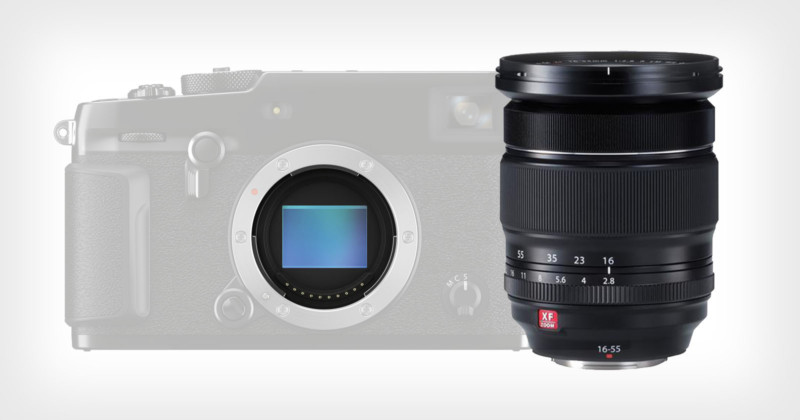
While full-frame has received the most attention from camera manufacturers in recent years, there are plenty of great reasons to purchase smaller format sensors like APS-C. These systems can be cheaper, smaller, lighter, and offer greater reach over their full-frame counterparts.
That latter feature latter might be particularly appealing to sports or wildlife photographers.
Fujifilm is primarily an APS-C orientated company. Others, like Sony, Canon, and Nikon, split attention between full-frame and APS-C offerings. This means that while most of these companies’ focus may be on advancing full-frame technology, at the very least those advancements can trickle down to the smaller format models. The best part is that these cameras tend to be a good bit less expensive while still offering that cutting-edge technology.
What We’re Looking For
The term “best” can be rather nebulous in terms of how we weigh price, size, image quality, versatility, and other factors against one another. Therefore, we have tried to balance between those attributes with as little sacrifice on the “image quality” aspect as possible.
Many manufacturers, like Sony, Nikon, and Pentax, use the same mount for both their APS-C and full-frame offerings, which has the added advantage of allowing the APS-C bodies to use full-frame lenses (and vice versa, with a crop).
With that said, we will not be including any full-frame lenses in this guide as we want to focus on lenses developed specifically for the smaller format sensor. There are also some third-party lenses that are offered in more than one mount covered here — we will not rehash the same lens in these situations for each mount. In such a case, this guide will provide you with multiple options.
One final note: the Nikon Z-mount and Panasonic/Sigma/Leica L-Mount systems have not been included here as they currently have very few native APS-C offerings. This list will be updated at a later date if and when those systems are filled out.
With that, here are our selections for the best APS-C lenses you can find for wide, normal, and telephoto offerings across a variety of lens mounts:
Best APS-C Lenses for Canon EF
Best APS-C Lenses for Canon EF-M
Best APS-C Lenses for Nikon F
Best APS-C Lenses for Fujifilm X
Best APS-C Lenses for Pentax K
Best APS-C Lenses for Sony E
Best APS-C Lenses for Canon EF
Wide: Tamron 10-24/3.5-4.5 Di II VC HLD (also available for Nikon)
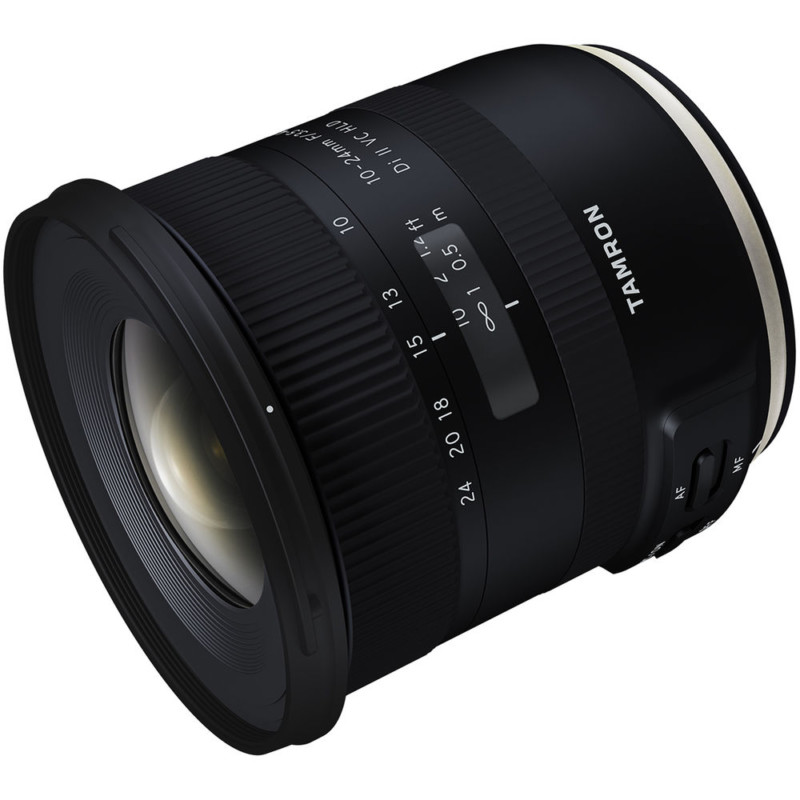
As a huge fan of Tamron’s newest lenses (characterized by their smooth black exterior and all-white lettering), this lens is very easy to recommend.
Unlike many wide-angle lenses, this one is equipped with Tamron’s very good vibration compensation (VC) which affords you an additional two stops or so of handholding ability. A switch on the side allows you to turn VC on and off, which is often recommended if you are working on a tripod. It’s also dust and moisture resistant.
The image quality produced by this lens is downright impressive — very good wide-open with a bit of resolution falloff in the corners and edges, but these clean up very quickly upon stopping down. Thanks to its fluorine coating, flare and ghosting are extremely well controlled. Chromatic aberration and distortion easily clean up in post. In short, it does not lack in the image quality department.
It is worth noting that this lens uses Canon’s EF mount, instead of EF-S, meaning it is compatible with full-frame bodies as well — and it covers a full-frame sensor from about 13 or 14mm upward. So, if you have both APS-C and full-frame and are looking for an affordable lens for both, this may be a good place to look.
Normal: Sigma 17-70mm f/2.8-4 DC Macro OS HSM (also available for Nikon and Pentax)
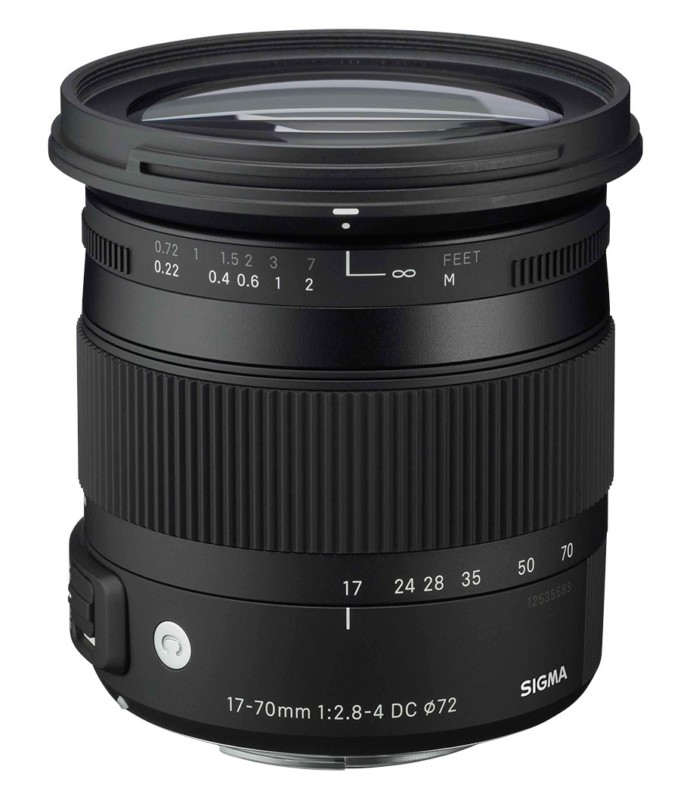
Part of Sigma’s newer “Contemporary” line, this is a replacement for the (somewhat unfortunately) identically named prior model — you can easily spot the difference from the use of all white lettering (no yellow) and the silver, circular “C” logo near the AF/MF switch.
Designed as an alternative to manufacturer kit lenses like Nikon’s 18-55mm, the Sigma 17-70mm offers several advantages: 2/3 of a stop faster at the wide end and a stop faster at the long end, plus a bit more reach in either direction. It also allows for an unusually close focus distance of just 22cm (at every focal length), making for a 1:2.8 maximum magnification at 70mm. And the build quality between the two is not even a conversation — the Sigma is another league entirely.
With excellent image quality across the board, combined with Sigma’s “Hypersonic Motor” autofocus, this is a great all-around option for those looking to cover a wide range of typically used focal lengths with great build quality and performance.
Telephoto: Sigma 50-100mm f/1.8 DC HSM Art (also available for Nikon)
Part of Sigma’s legendary Art series of lenses, the Sigma 50-100/1.8 Art is the bigger brother of the incredibly popular and highly lauded Sigma 18-35mm f/1.8 Art. They are well known, and highly regarded, for their impeccable optics and unusually fast aperture. So popular with videographers they were, Sigma rehoused them and released cine versions of both.
This lens in particular is designed to compete with full-frame 70-200mm f/2.8 lenses. It falls a bit short on each end (80-160 equivalent on Canon), but you have to give it some credit: it not only matches the depth of field but gathers over a stop more light, allowing APS-C photographers to shoot with even more versatility.
Its biggest issue — and one that is generally more important to videographers than photographers — is that it displays significant focus breathing. It is not awful, but certainly noticeable when racking focus.
There is very little to report on the image quality front: it is just that good. Basically, if the focal lengths appeal to you, buy it. There aren’t any other alternatives, which in this case may not be such a bad thing because this one is stellar.
Best APS-C Lenses for Canon EF-M
Wide: Canon EF-M 11-22mm f/4-5.6 IS STM
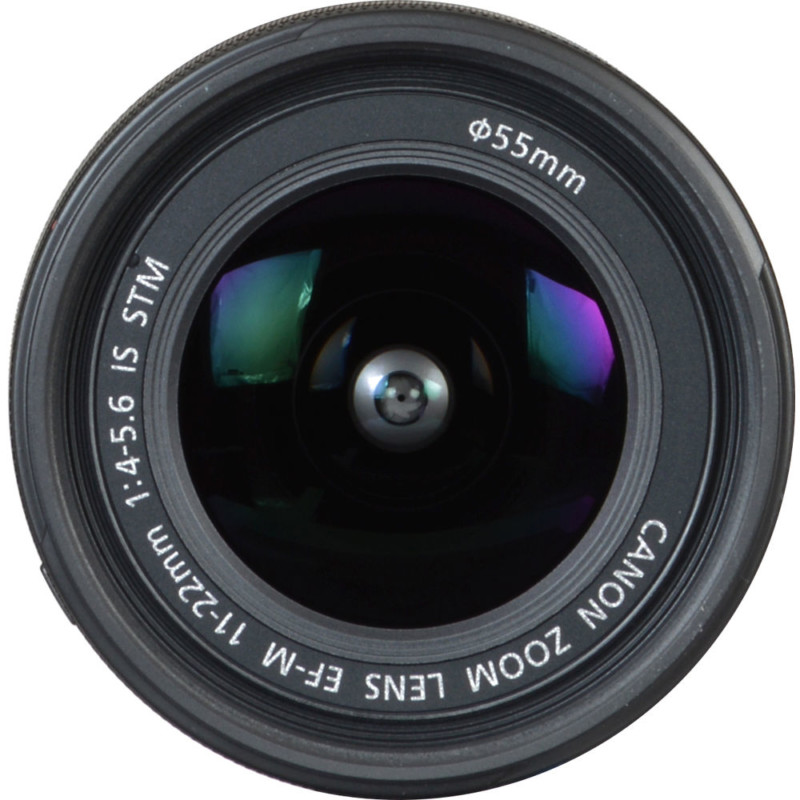
With a sleek, streamlined barrel and finish (like most other EF-M lenses), this lens is minimal in design with a textured fly-by-wire focus ring and zoom-lock switch being your only on-lens controls. The lens body is kept short and slim due to the use of a retractable design with the lens collapsing back into the barrel when not in use.
Super Spectra Coatings keep flares and ghosting to a minimum and the optical stabilizer works to correct handheld-induced camera shake by up to three stops — the inclusion of the latter being rare, though not unheard of, for a wide-angle lens.
Sharpness and overall image quality are very good across the board, with some falloff at the widest focal lengths, which quickly improves upon stopping down. With a quite versatile 17-34mm (full-frame equivalent) focal range, optical image stabilization, a very lightweight and compact design, plus a very appealing price tag makes this an easy decision for any EF-M shooter desiring a wide-angle option.
Normal: Canon EF-M 32mm f/1.4 STM
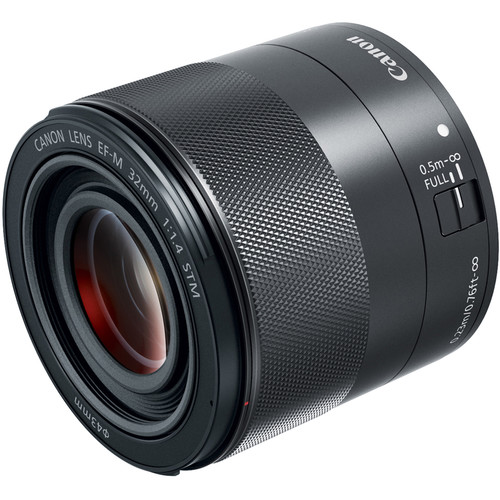
Currently the fastest lens in Canon’s EF-M lineup, this is one of the must-have optics if you are going to invest in the EF-M system (or have already). When attached to an EOS M-series body, you will have an equivalent focal length of about 50mm in full-frame terms — the equivalent depth of field will be around f/2.2 if such a thing matters to you.
It turns in exceptional optical performance — in fact, it is one of the best performing APS-C lenses around this focal length from any system. Sharpness is impressive wide-open, even out to edges. Minimal barrel distortion, excellent flare control, and very little lateral chromatic aberration round out the list of image quality pros.
There really is not much to complain about here. It is a very versatile, affordable, and fantastically performing lens that belongs in the bag of anyone who shoots with Canon EOS M bodies.
Telephoto: Canon EF-M 55-200mm f/4.5-6.3 IS STM
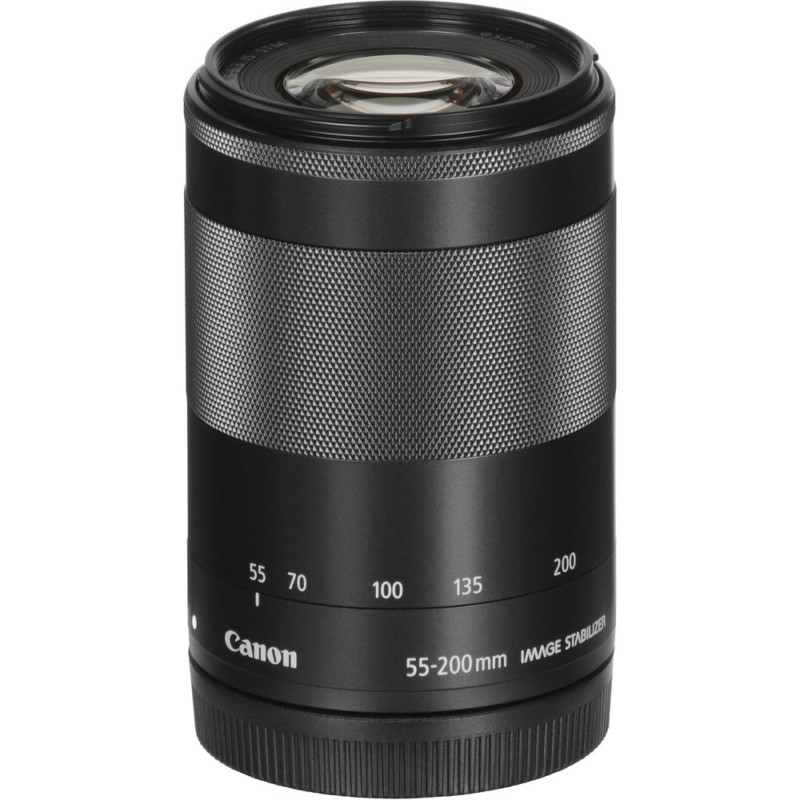
Weighing in at just 260 grams, 3.41 inches in length, this 90-230mm (full-frame equivalent) zoom lens has an impressively small footprint. Like all EF-M lenses, it showcases a sleek barrel and finely textured zoom and focus rings.
Again, like most EF-M lenses, it continues the trend out of outperforming its EF-S counterpart (in this case, the EF-S 55-250) in the image quality department. It is impeccably sharp across 90% of the frame wide-open, though it does lose a bit at the very long end. Everything improves upon stopping down where the entire frame is resolving extremely well.
If it has one Achilles’ heel, it would be some rather strong vignetting to the tune of 2.5 or 3 stops wide open. Vignetting is the least worrisome of optical maladies and that holds true here — it cleans up fine in post.
This lens is cheap and it does show in a number of areas — the mount is plastic, there is no supplied lens hood, and construction is not top of the line. But the lens hits home where it matters: image quality.
I have begun to believe, over the past couple of years, that the days of garbage kit lenses and cheap consumer trash are behind us. Even the cheapest, most threadbare-constructed lenses are consistently turning in a performance that ranges from very good to shockingly good — something we will see with a few of my other recommendations too.
Best APS-C Lenses for Nikon F
Wide: Nikkor AF-P DX 10-20mm f/4.5-5.6G IF VR
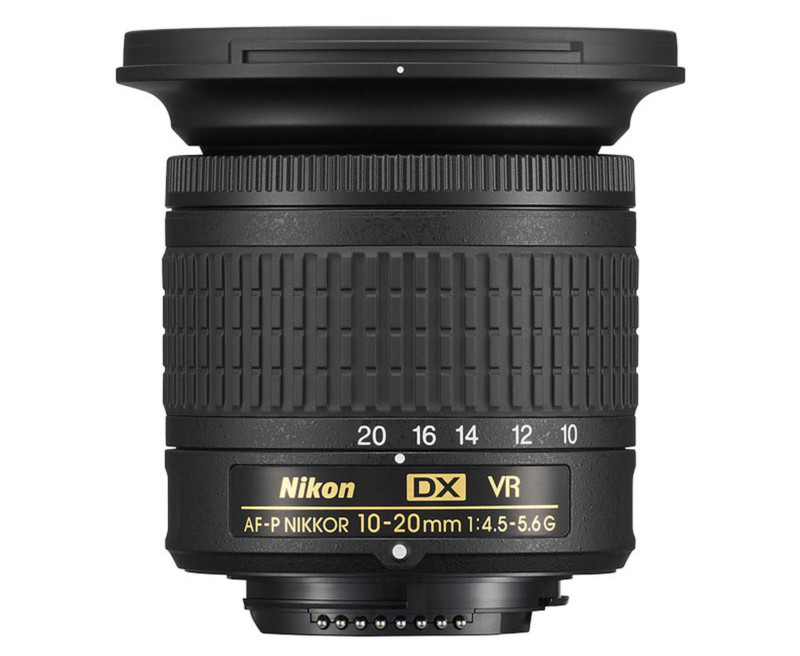
Clocking in at just 280 grams and typically packaged in camera kits for little extra money, this may be a surprising choice. But this is a shockingly great piece of equipment that really shines where it matters most: image quality.
It sacrifices a bit in speed and some easily correctable flaws (vignetting, distortion) to some of the larger, more expensive competition (most of which is full-frame). But it makes up for it with excellent sharpness from wide-open, great flare control, very little uncorrectable chromatic aberration, and the new AF-P focus motor which is lightning fast and basically silent.
Build quality is cheap at best — plastic lens mount, no AF or VR switch – but for the cost, you could buy two for the same or less than most of the competition. It’s pretty much a no-brainer.
It should be noted that Nikon AF-P lenses only work the latest generation or two of Nikon bodies, like the D7500 or D5500. Please check compatibility with your body if you are unsure.
Normal: Nikkor AF-S DX 35mm f/1.8G
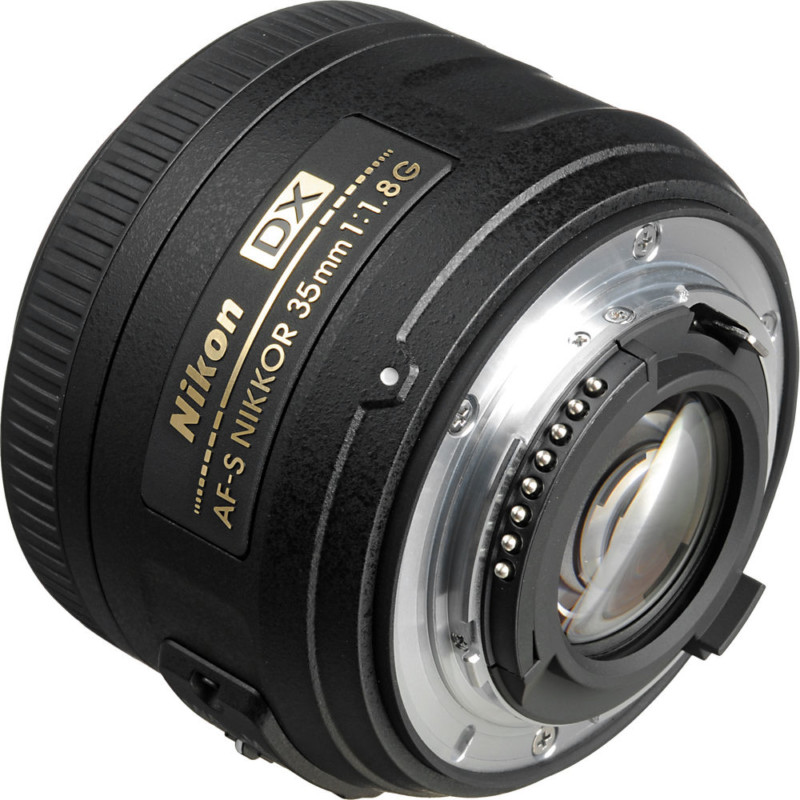
This is one of Nikon’s few dedicated APS-C prime lenses and easily the most revered — and for good reason. Not only is it insanely cheap (about $200, or less if you get it on sale) but it is also an incredibly good piece of glass. Not many manufacturers have an APS-C version of the “nifty fifty,” but that is basically what we have here.
With a bright and fast f/1.8 aperture, the lens affords you a lot of control over your depth of field and permits shooting in lower light than your standard zooms. This is often one of the first lenses Nikon photographers reach for when they upgrade beyond their kit lenses, but it’s a worthy look for anyone — amateur to professional alike — in the Nikon APS-C ecosystem.
Thankfully, build quality doesn’t suffer due to the low price tag — it’s on par with Nikon’s FX prime lenses and the Silent Wave Motor makes autofocus snappy and quiet.
Telephoto: Nikkor AF-P DX 70-300mm f/4.5-6.3G ED VR
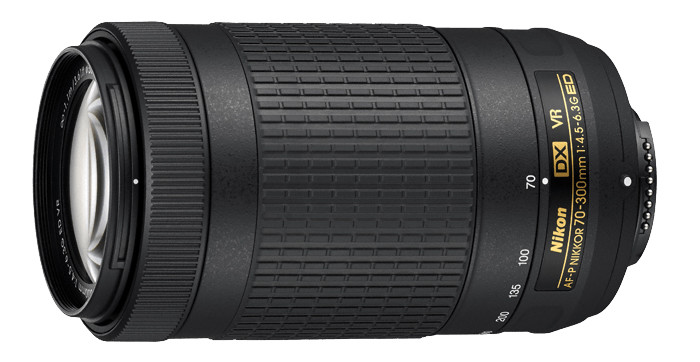
Like the Nikkor 10-20/4.5-5.6 AF-P, this lens has an equally economic build: plastic all-around — including the mount — no external switches or controls, no hood included. It is also included in many kits — or by itself for $400.
As it offers 450mm of full-frame equivalent reach, this is a wonderful option for those in search of a cheap, lightweight lens that does not sacrifice anything in image quality. Its newer AF-P motor, coupled with a top-of-the-line autofocusing system like that found in the Nikon D500, makes for an incredibly versatile and affordable option for anyone looking to explore the telephoto side of photography.
As mentioned above, Nikon AF-P lenses only work the latest generation or two of Nikon bodies, like the D7500 or D5600. Please check compatibility with your body if you are unsure.
Best APS-C Lenses for Fujifilm X
Wide: Fujifilm XF 18mm f/1.4 R LM WR
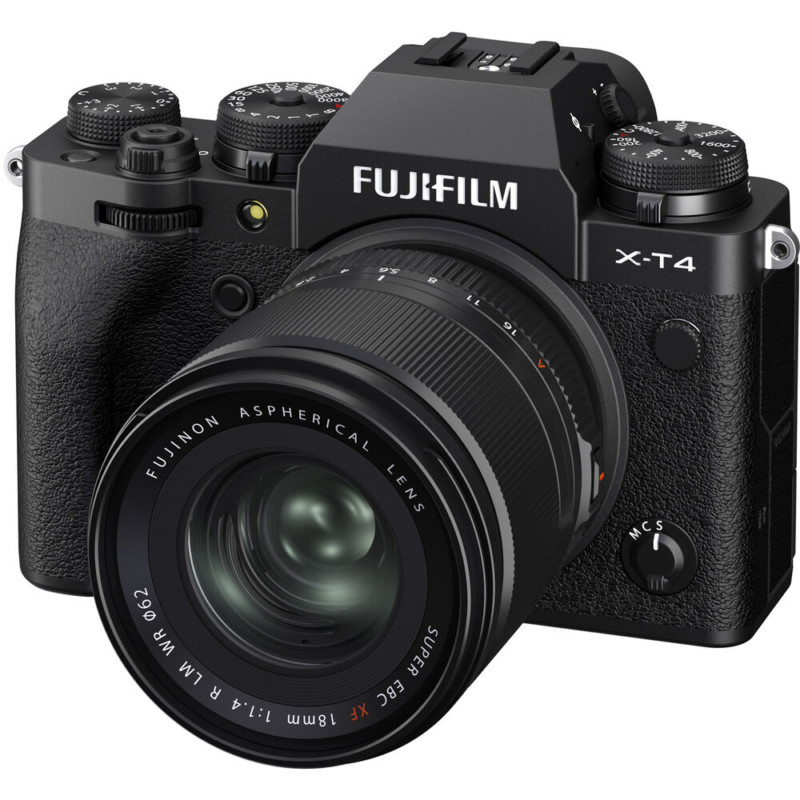
Perched between the 16mm and 23mm lenses in their f/1.4 line-up, this latest addition is one of the finest optics Fujifilm has ever released — and probably their best wide-angle lens to date.
It incorporates Fuji’s newest autofocus technology, which ensures swift and quiet operation, as well as weather resistance and an aperture ring. Image quality is essentially second to none among Fujifilm X lenses: phenomenal sharpness across the entire frame that improves only slightly when stopped down to f/2, very nice sunstars stopped down, almost zero field curvature, and very well-controlled lateral or longitudinal chromatic aberrations.
This is a lens with very few caveats — occasional flare and ghosting are possible, but easily preventable if you watch for it and/or use a hood.
Normal: Fujifilm XF 16-55mm f/2.8 R LTM WR
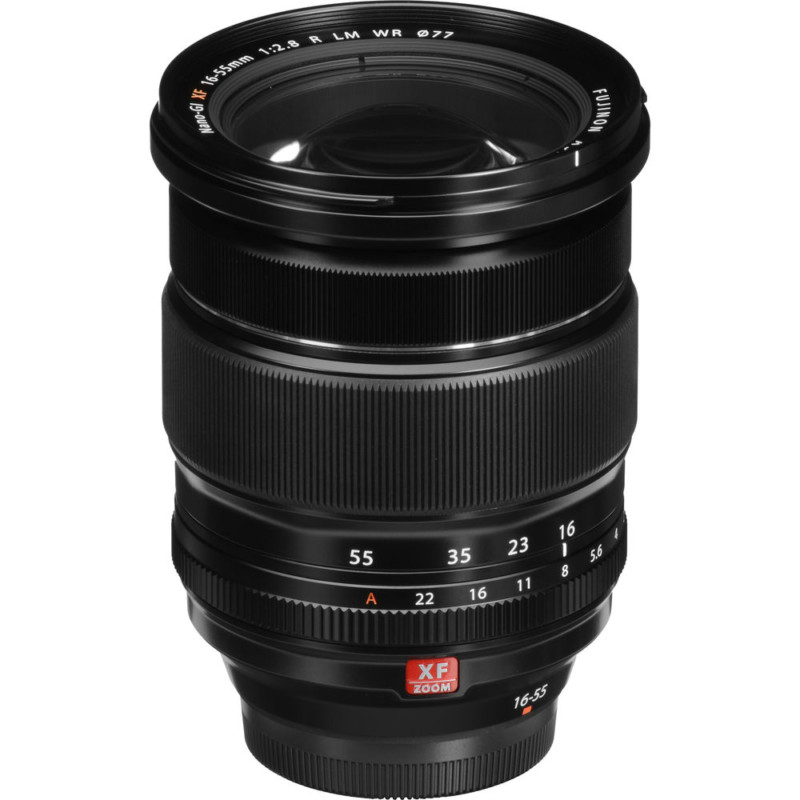
This is one of four of Fujifilm’s standard zoom lenses. Of those, it is the most expensive, bulkiest, but also highest performing and most well-built lens of the bunch. A metal mount meets a metal shell, with rubber gaskets filling the gaps which make for excellent dust and weather sealing.
It is a big chunk of 17 elements in 12 groups piece of glass — three extra-low dispersion (ED) elements are present to reduce axial and lateral chromatic aberrations and three aspherical elements work to control distortion and spherical aberration. This is a complex design of a lens, but when you see the results, you’ll appreciate it.
Wide-open at 16mm, it resolves an incredible amount of detail in the center. This naturally falls off as you move toward the edges, but that’s nitpicking — the lens is incredibly wide-open at every point in the focal range. Stopping down to f/4 improves mid-frame and corner performance across the board. If I have made this sound less than stellar, I will describe it another way: this lens is as sharp or sharper than many of Fujifilm’s prime lenses. To find this level of performance in a zoom lens is extremely rare.
Bokeh can be a bit nervous thanks to the aspherical elements — again, nothing unusual for a zoom lens like this. With Fujifilm’s use of HT-EBC (High Transmittance Electron Beam Coating) and their Nano-GI (Gradient Index) coatings, flare is very well suppressed as is ghosting. Transmission is also very high, which is impressive given the sheer amount of glass packed into this thing.
The only downside of this lens is its weight/bulk (and price). In my opinion, it is well worth it — it is simply the best performing zoom lens that Fujifilm has to offer alongside its telephoto brother, the XF 150-400mm f/2.8.
Telephoto: Fujifilm XF 70-300 f/4-5.6 R LM OIS WR
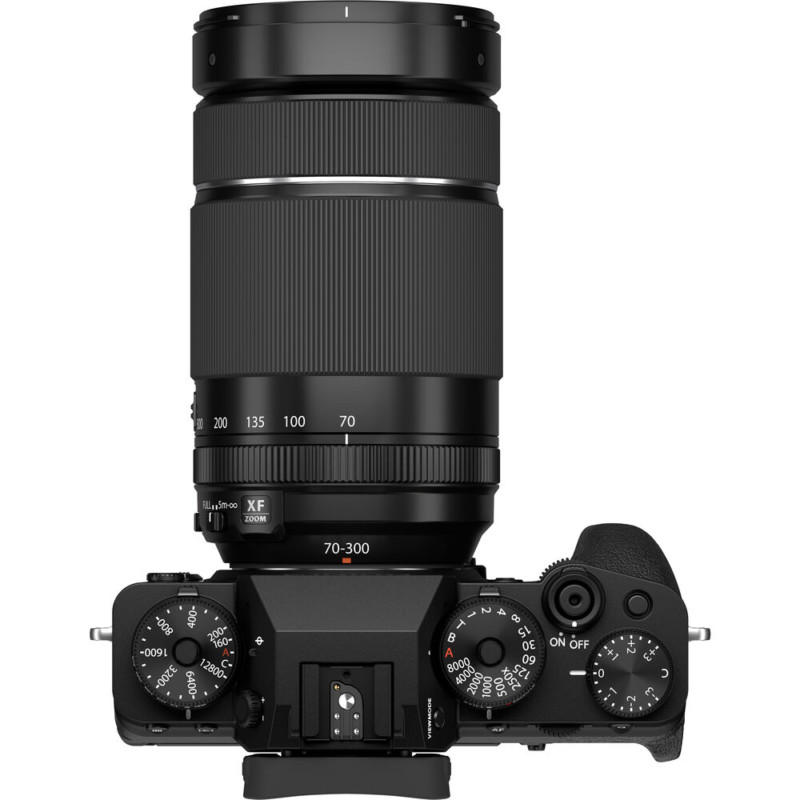
The newest addition to Fujifilm’s telephoto line-up, this lens aims to close the gap between their very heavy and very expensive XF 100-400mm and their cheaper, slower XC 50-230mm lenses. And it succeeds quite well.
This lens has a ton of nifty features up its sleeve: 105-450 full-frame equivalent (approximately), 5.5 stop optical image stabilization, weather-sealing, customizable ring, 1:3 maximum magnification.
Most importantly, it delivers on image quality. Aside from the Fujifilm 100-400, which is over twice the weight, it handily surpasses Fuji’s 50-230mm and 55-200mm lenses with superb sharpness, well-suppressed aberrations, very effective OIS, and excellent autofocus implementation. It can also use Fujifilm’s 1.4x and 2x teleconverters — a distinction previously reserved for the 100-400 and 50-140mm lenses.
If you need a wildlife or sports lens (or just need a telephoto zoom in general) this is the one to get — the 100-400 wins on total reach but loses out or ties in just about every other regard.
Best APS-C Lenses for Pentax K
Wide: HD Pentax DA* 11-18mm f/2.8 ED DC AWH
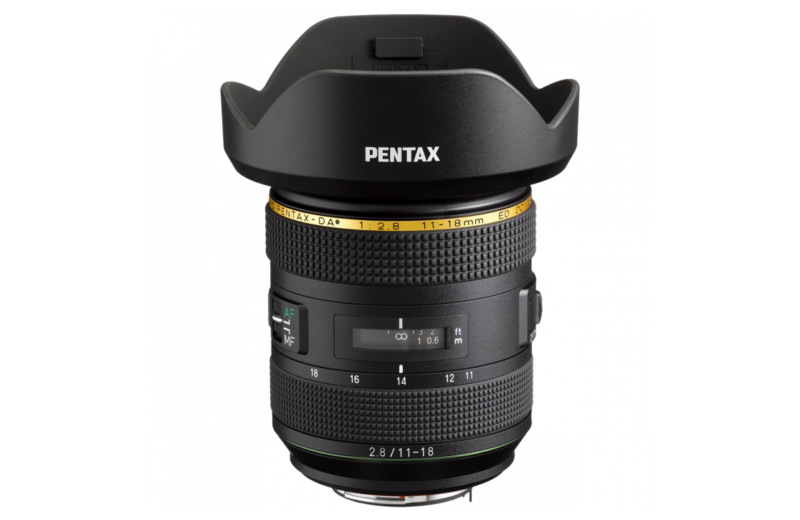
Part of Pentax’s newer Star (*) series of lenses, which are optimized for modern high-resolution, high pixel-density sensors — as well as those of the future — the DA* 11-18mm f/2.8 offers sharp, high-contrast images and a full-frame equivalent field of view of about 17mm to 28mm. The new Star lenses are manufactured to withstand the harshest outdoor conditions, meaning the lens is dust- and weather-resistant.
But it is not just a ruggedly designed and built piece of equipment. This is easily the finest wide-angle optic that Pentax offers — given the impeccable quality of their best lenses, this alone says a lot.
Aimed at astro and landscape photographers who desire ultimate image quality — including almost zero distortion, incredible sharpness, almost no coma or astigmatism, and minimalized aberrations — this is the lens to choose if you need the best of the best for your Pentax APS-C system.
Normal: HD Pentax DA 20-40mm f/2.8-4 ED Limited DC WR
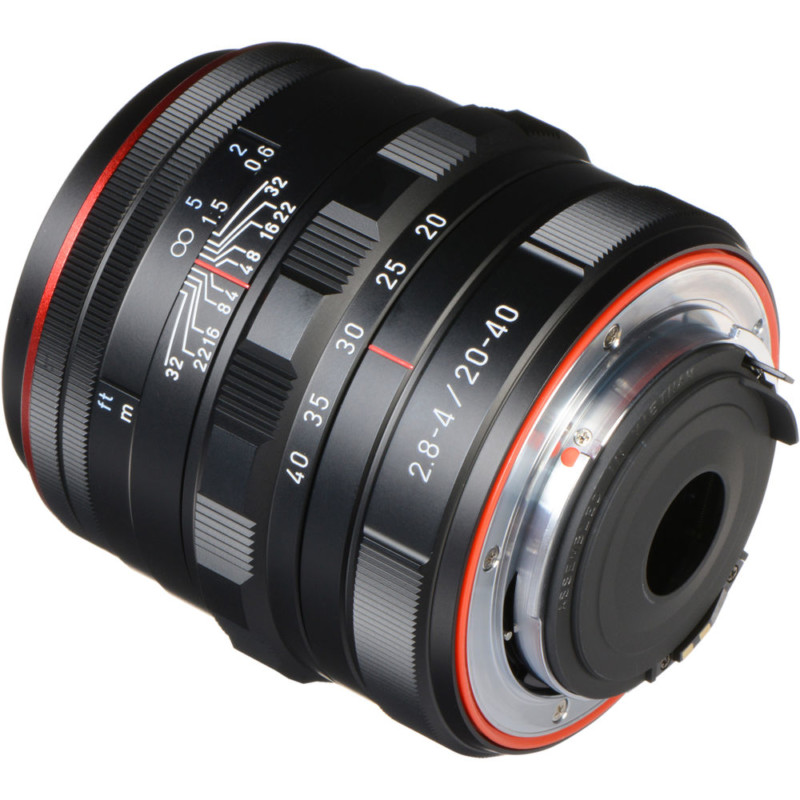
This lens is one of the many jewels of the Pentax K-mount system. While the (full-frame equivalent) 30-60mm range and variable aperture may seem somewhat limiting for a zoom, you probably will not feel that way after you use it.
The build of the lens is a little strange, at least for what you expect from a zoom lens, but makes for an incredibly pleasant experience. Its all-metal body and gasketed mount and seams exude confidence as far as robustness and weather-sealing go. The zoom ring — also metal — is ribbed, resembling something you’d find on a Voigtlander lens instead of a modern zoom. And it is a true pleasure to use.
Image quality does not disappoint; it is sharp wide-open with a bit of falloff in the edges and corners, but by f/4 or f/5.6 (depending on where you are in the zoom range) it’s incredibly sharp over the entire frame with aberrations being very well controlled. Transmission is incredibly impressive for a zoom lens — in terms of actual light gathered it may not be far off at the long end from a lot of constant f/2.8 zooms.
Maybe best of all, it only weighs 283 grams! Despite its all-metal build, weather-sealing, impressive optics, and admirable f/2.8-4 aperture, it weighs barely more than Canon or Nikon’s all-plastic 18-55 kit lenses.
Telephoto: HD Pentax DA* 50-135mm f/2.8 ED (IF) SDM
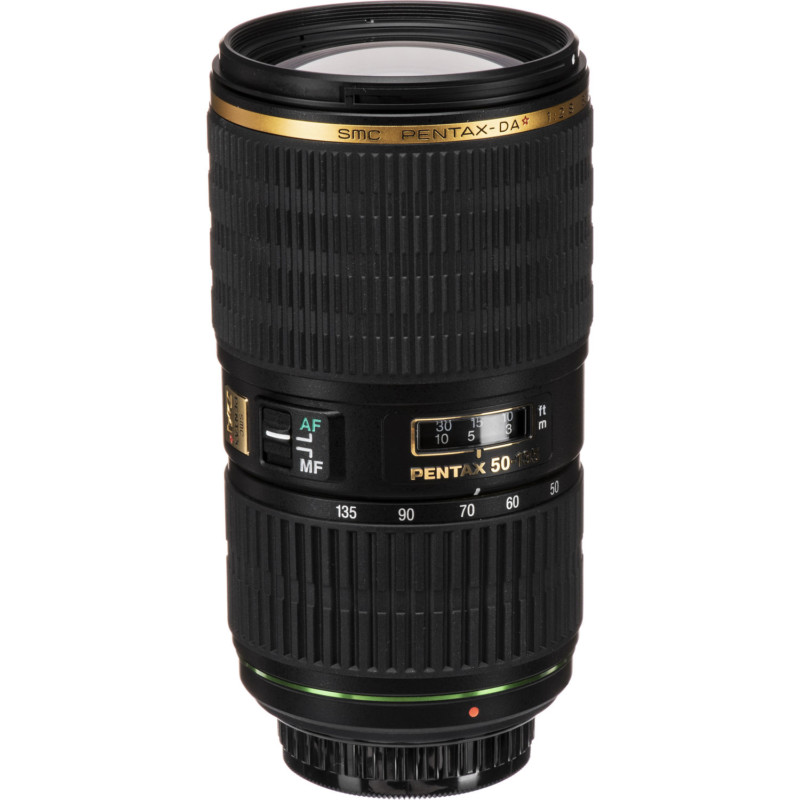
Like the 11-18mm, this lens is part of Pentax’s professional-grade DA* family of lenses — and you’ll know it when you use it. Thanks to the use of high-quality materials and Pentax’s excellent craftsmanship, it has a hefty build combined with robust weather-sealing to endure the harshest conditions.
It features Pentax’s newer Super Dynamic Motor (SDM) autofocus, but also offers screw-drive autofocus support for legacy bodies. The SDM autofocus offers quick, quiet, and reliable results.
Sharpness is excellent wide-open, though naturally peaks upon stopping down. Chromatic aberration is very well controlled, and fringing should not present much of an issue, while distortion is also minimal with some to-be-expected barrel distortion at the wide end which turns into pincushion distortion as you move up the focal length ladder. All of this is easily corrected in post.
If you are a fan of 70-200mm lenses on a full-frame body, this is Pentax’s answer to that for their APS-C models. And as far as answers go, it is not a disappointing one.
Best APS-C Lenses for Sony E
Wide: Sony E 10-18mm f/4 OSS

At least until Tamron’s new 11-20mm f/2.8 lens arrives, this is one of the few wide-angle, autofocus zoom lenses available for the Sony APS-C system. Thankfully, it is a rather great lens.
It clocks in at just 7.9 ounces and 2.5 inches in length, which makes this a very petite lens. Fortunately, Sony did not skimp on the build quality — there are no switches or controls, aside from the focus and zoom rings, but the finish and materials are quite sufficient.
It uses the older stepping autofocus motor, but it is still speedy and accurate. The much greater depth of field at these wide focal lengths also means it doesn’t have to work too hard to get it right. The inclusion of image stabilization (OSS) is also quite welcome.
Most importantly, optical performance is very good to excellent across the board. There is some loss in corner and edge sharpness at 10mm, but this improves considerably as you move toward the long end or stop down. Some barrel (at the wide end) and pincushion (at the long end) distortion are present but easily correctable in post.
This lens is a favorite of many vloggers and for good reason — but it’s also an excellent landscape option, particularly stopped down to f/5.6 or f/8.
Normal: Sony E 16-55 f/2.8 G
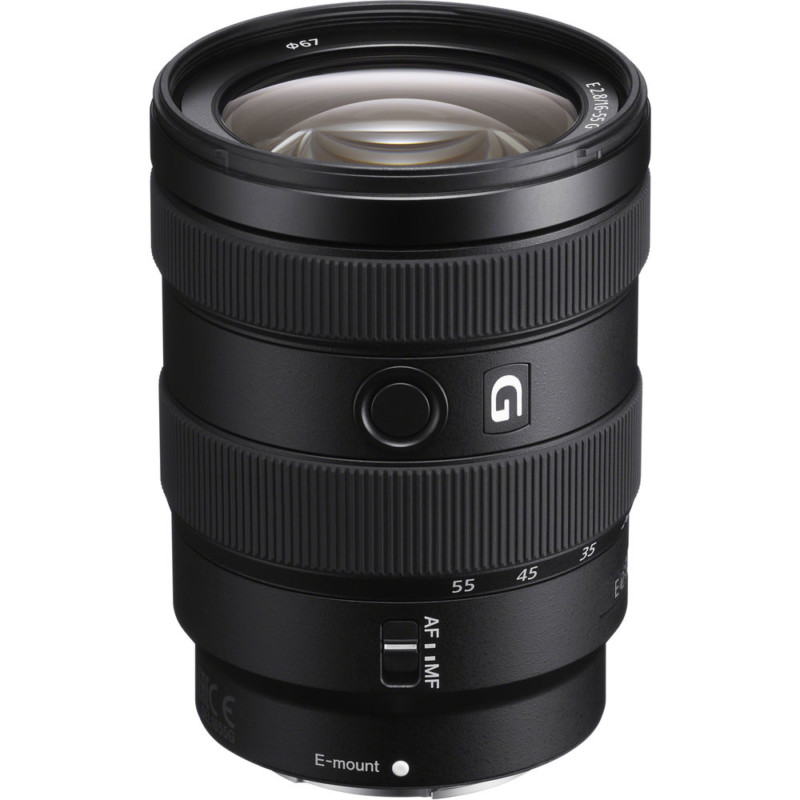
Targeted as a rough equivalent to a 24-70/2.8 full-frame lens, this is one of Sony’s newest APS-C optics — and one of their most expensive. While the Sony Vario-Tessar 16-70mm f/4 ZA is a very good alternative — with some benefits like more reach and image stabilization — the Sony 16-55mm is ultimately the better buy if you have the money.
This lens has the excellent optical performance we have come to expect from Sony’s more premium “G” line of lenses — sharpness, low distortion, excellent flare control, minimized chromatic aberration, this has it all. It is not light, weighing in at 494 grams (1.09 lbs), but the build quality — including a customizable focus hold button — cannot be faulted.
Perhaps the greatest advantage of being one of the newer options available is its incredibly fast, precise, and quiet XD linear focus motor, which offers some futureproofing against the industry’s ever-increasing frame rates.
Telephoto: Sony E 70-350mm f/4.5-6.3 G OSS

Introduced alongside the Sony 16-55mm f/2.8 G, the Sony 70-350mm G is one of the best purchases you can make if you are a Sony APS-C user looking to explore the higher end of the focal length spectrum. It is more affordable than the 16-55 and shockingly not much heavier (1.38 lbs vs 1.09). Build quality is incredibly similar — which is to say very good — with the typical AF/MF and OSS On/Off switches plus a customizable focus hold button. It is also weather-sealed around the mount, seams, and switches.
With a 5x zoom range — up to a whopping 525mm full-frame equivalent — and very impressive optical performance, this is one of the first places you should look for a lightweight, reasonably priced wildlife or sports kit. The built-in Optical SteadyShot (OSS) is very effective, which makes up somewhat for its slower apertures.
Finally, like the 16-55, its newer XD linear focus motor allows it to keep up with the rapid autofocus tracking features found in the newer a6xxx models — and future models, of course.